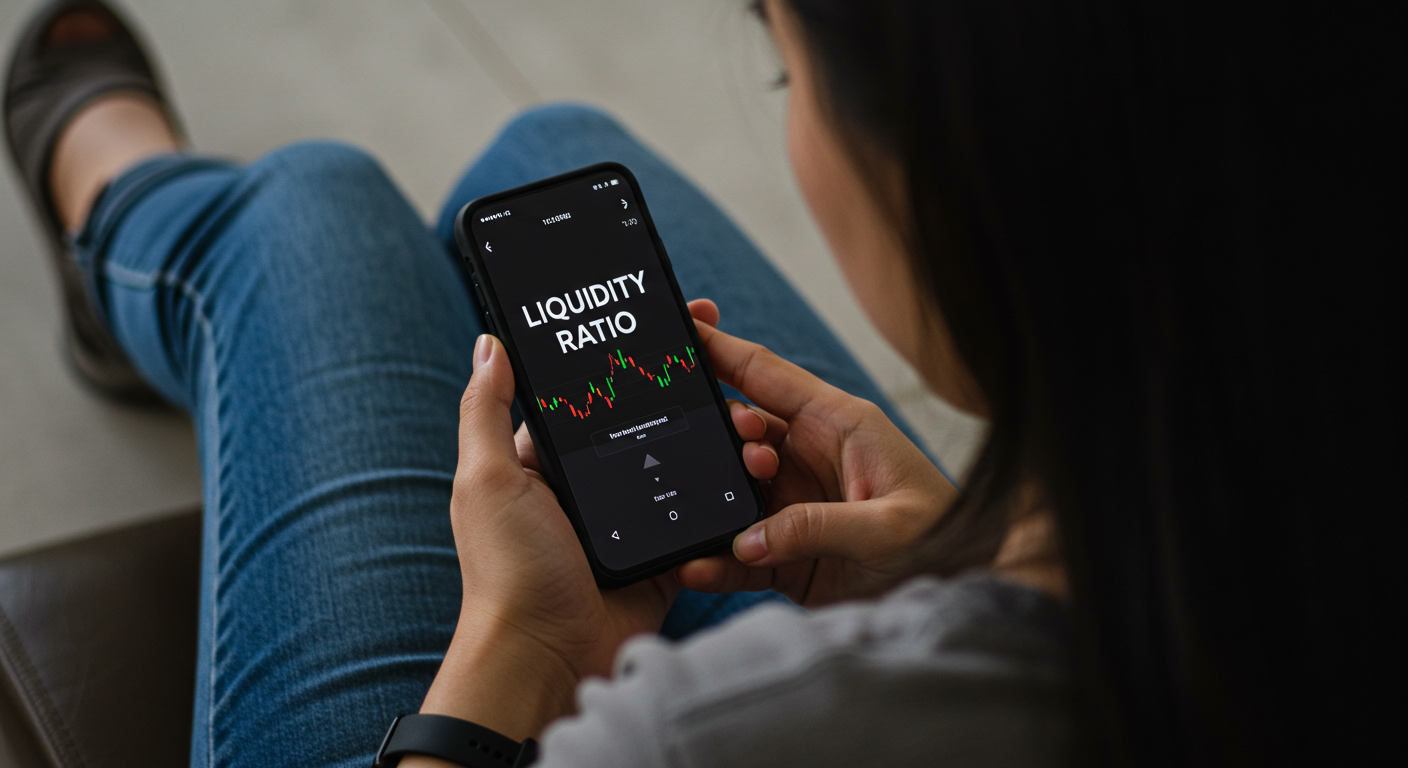Key Takeaways:
- Business owners must keep track of how much cash they can use without disrupting daily operations by monitoring their liquidity ratios.
- Cutting unnecessary expenses is a practical way to improve liquidity and strengthen financial stability.
- Liquidity ratios help anticipate whether a business is prepared to handle unexpected costs in the future.
Introduction
For most business owners not just in the UK but around the world, the simplest equation in their mind when it comes to success is them determining how much money they made for a particular month and then they subtract it to their overall expense for the said month. True, but there is actually more to running a business other than this.
There are also inevitable situations when a business owner is struggling to keep up with consumer demands and keeping their partners, suppliers, and/or lenders happy. Sounds familiar, right? This is because these business owners don’t know how liquid their business is. They have this vague idea of something like checking the fuel gauge before a long drive to give them a picture of how far they can go without running into trouble.
But, how do businesses and business owners determine how much money they have to have and how much money they need in their cash reserves in order to avoid unexpected expenses in the future? Most especially that businesses are susceptible to loans, debts, dues and the likes?
Since it is normal for businesses to have these liabilities, would you as a business owner would want to know or keep track of how your business is able to pay the aforementioned liabilities and keep ahead of the competition at the same time?
What Is a Liquidity Ratio?
Liquidity Ratio is a measure of how a business is able to pay short-term debt with the cash they have available. Liquidity Ratio will tell you if your business is liquid enough or you will need cash assistance in keeping up with expenses and liabilities such as dues, debts, and loans.
Think of it this way: if all your bills were due tomorrow, could your business cover them using only the resources you already have on hand? The liquidity ratio gives you that answer in a single number.
Here’s the simple breakdown:
- Short-term assets are things your business can quickly turn into cash — like money in the bank, accounts receivable (customer invoices due soon), and inventory.
- Short-term liabilities are debts and obligations due within the next 12 months — such as supplier invoices, short-term loans, or tax payments.
When you divide your short-term assets by your short-term liabilities, you get your liquidity ratio.
There are actually three common types of liquidity ratios:
- Current Ratio – Includes all short-term assets (cash, receivables, inventory).
- Quick Ratio (or Acid-Test Ratio) – Stricter version, excluding inventory from assets.
- Cash Ratio – The strictest, counting only cash and cash equivalents.
In simple terms:
- A higher liquidity ratio generally means your business is better positioned to pay off debts without scrambling for cash.
- A lower ratio could signal a potential cash flow crunch.
Why Liquidity Ratio Matters for Businesses
As mentioned earlier, businesses and business owners are not just supposed to calculate how much money they earned this month for example and subtract it to their overall expenses, no. Knowing liquidity ratio is a reflection as a business owner that you are serious in keeping track of your financial standing, because in business, you have to account for every penny that goes in and out of your business if you truly want to stay ahead of your competitors.
Another thing you might want to consider why this is so important is that people depend on you as their employer. If you as an employer does not have an understanding of liquidity ratios then you are basically an accident waiting to happen and when that happens, your dependeds will have to find work somewhere else it it doesn’t take just days, sometimes months. Which is why a healthy ratio is important to keep your business running so you can provide a stable employment, not just smooth business operations.
Another perspective would be that of a lender of course. Just a simple question for you: “Would you as a lender, allow a business to access your cash assistance knowing they won’t be able to pay you back?” If you are the approving officer, you wouldnt even have a shadow of a doubt you’d turn them down. Liquidity ratio is an indicator for lenders that you are able to pay them but you are just in need of a little push. This gives reassurance to lenders that they are going to make money by helping you and you are going to make money as well, so it is a win-win.
Lastly, a healthy liquidity ratio gives your business more room for growth! If an opportunity suddenly appears, you won’t have to worry about where to get the resources to grab it since you already have it in your arsenal without compromising your business’ performance. This is what it means to stay ahead of the competition.
How to Calculate It
To come up with the liquidity ratio, you don’t need to be a mathematician or a math savvy to do it. And even though it would be a simple formula, it can help you with your business. The formula is simple:
Liquidity Ratio= Short Term-Assets/Short-Term Liabilities.
Short-term assets include your cash wether in the bank or on hand, the money owed to you by your customers or Accounts Recievables, and any other resources that you can convert to cash within a year.
Short-term liabilities are bills, debts, taxes, and other liabilities that you must pay within the year.
For example, imagine your business has £120,000 in short-term assets and £80,000 in short-term liabilities. Dividing £120,000 by £80,000 gives you a liquidity ratio of 1.5. This means that for every £1 you owe in the short term, you have £1.50 in resources to cover it. A ratio above 1 generally indicates a comfortable position, as it suggests you have more assets than liabilities. However, the right ratio for your business can vary depending on your industry and operating model.

Liquidity ratios give you an indication. This will give you an idea of of strategic decisions you need to make. Knowing this will act as your cushion, instead of realizing later on that you are supposed to have anticipated that you are bleeding cash, and should have made informed decisions way before that problem occured.
What’s a Good Liquidity Ratio?
While a liquidity ratio above 1 is often seen as a sign of financial health, the truth is that what counts as “good” depends on the nature of your business and your industry. For many companies, a ratio between 1.2 and 2 is considered healthy because it shows you have enough short-term assets to cover your immediate debts, with a comfortable cushion for unexpected costs. If your ratio is lower than 1, it suggests that your liabilities outweigh your assets, which can make it difficult to meet obligations without relying on additional borrowing or emergency measures.
That said, having a very high liquidity ratio is not always a positive sign. If your business has a ratio well above 2, it could mean you’re holding on to too much cash or tying up resources in assets that aren’t being put to work. In some cases, this can signal missed opportunities for investment, growth, or expansion. Money sitting idle in a bank account may feel safe, but it’s not generating returns or helping the business grow.
Different industries also have different benchmarks for what’s considered healthy. A retail business that relies on quick inventory turnover might operate well with a lower liquidity ratio, while a construction firm dealing with long project cycles may need a higher ratio to cover extended payment timelines.
Seasonal businesses, such as those in agriculture or tourism, may see their ratios fluctuate throughout the year, making it even more important to assess the figure in the context of timing and cash flow patterns.
Ultimately, the goal is balance. A good liquidity ratio is one that gives your business enough flexibility to manage short-term obligations comfortably while still putting your assets to work in a way that supports long-term growth. Monitoring the number regularly and comparing it to industry standards will help you decide whether you need to improve your position or if you’re already on solid ground.
Improving Your Liquidity Ratio
Ideally, everyone want’t their liquidity ratios at above as much as possible all year round and possible even for the entire life of the business if possible. But, that is just not realistic. However, it doesn’t stop us from giving our efforts to achieve this dream and just try to keep it above 1. The things mentioned below will be simply just be minimizing your overall expenses and avoid yourself getting into deals that would be hard for you to get out of later on.
Try to reduce your overhead costs as much as possible and don’t spend on things that are not necessary to help your business grow. If you have more employees than you should, then you have to take the painful route of letting go some underperforming employees. Another would be supplies, if you can find suppliers that offer less price without compromising quality, then you should go for it.
Another would be travel expenditures or transportation costs, of it would be possible to have it online or done remotely then you should. Not only will you save money, you can actually also save time.
Apart from these expenses, there are also: Telephone bills, accounting fees, interests from loans or debts, so you should aim to pay them first before getting into another one. Lastly, marketing expenses, make sure you get what your money is worth other wise instead of making money, you are actually spending for nothing.
Asset refinancing could also be a good strategy, particularly for businesses with vehicles, equipment, or machinery that are already paid off. You can actually use these assets to get more money based on what its worth. By this you can have more capital into your business without selling them. Asset Finance solutions providers can help turn owned equipment into a source of working capital, improving liquidity while allowing you to continue using the assets that keep your operations running.
Managing inventory efficiently plays a role as well. Stock that sits in storage for long periods ties up money that could otherwise be used for immediate needs. By tracking sales patterns and adjusting your purchasing to match demand, you can keep inventory levels lean without risking shortages. This not only frees up cash but also reduces storage costs, further enhancing your liquidity position.
Finally, consider matching the timing of your expenses with your revenue cycle. If you know that certain months bring in less income, plan your major payments or purchases for busier periods when cash flow is stronger. Aligning your financial obligations with your earning patterns can prevent liquidity from becoming a recurring issue and create a more predictable financial rhythm for your business.
Bottom Line
There are ways to anticipate if your business will be able to overcome unexpected future expenses especially if those expenses would be so big it could shut down your business. Who would want that? Knowing your business liquidity ratio is one of the most important if not the most fundamental way of making sure your business is capable of going around hurdles.
When you find your business having a weak ratio, it is time to consider not taking any more loans more than you could afford. Pay off your outstanding liabilities first before making another one. Keep your expenses at minimum, basically, you are aiming to keep your business’ expenses low so it could have more room to breathe be more flexible.
If just in case you still need a little bit of push that you need business financing but your liquidit ratio is just enough, consider choosing the business financing solutions provider with the most affordable and flexible rates. It is always important to remember that running a business is not just about profit minus expenses for the month, although liquidity ratios is one of the answers in keeping your business running smooth, always try learn more about the simple formulas that can make the biggest differences in your business.









